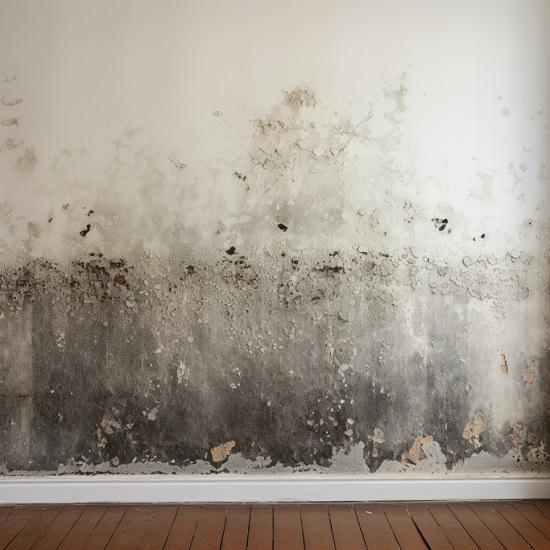Necessary Steps After Mold Remediation
Necessary Steps After Mold Remediation
Blog Article
Effective Post Mold And Mildew Remediation Solutions for Your Home
Mold development in homes can be a consistent concern, typically requiring a systematic method for reliable post-remediation remedies. From recognizing the elements that contribute to mold and mildew advancement to applying correct cleaning strategies and moisture control measures, the process can be intricate yet important for maintaining a healthy and balanced living setting. Additionally, exploring natural remediation options and establishing a routine for ongoing upkeep are vital parts of an extensive mold remediation method. As home owners aim to address mold and mildew worries, discovering one of the most reliable services becomes extremely important for the wellness of their households.
Comprehending Mold And Mildew Development Factors
Mold growth is affected by a selection of variables that are essential to understand in order to properly resolve and prevent its proliferation. Understanding these elements is vital in applying effective mold and mildew removal approaches. The main element contributing to mold development is dampness. Mold and mildew spores require moisture to grow and sprout, making moist or humid atmospheres very at risk to mold and mildew invasions. Poor ventilation can also cause moisture accumulation, creating an optimal breeding ground for mold.

Moreover, airflow and light exposure can affect mold and mildew growth. Locations that lack proper ventilation and all-natural light are more vulnerable to mold and mildew growth. By attending to these factors comprehensively, individuals can effectively mitigate mold and mildew growth and protect their living settings.
Proper Mold And Mildew Cleansing Methods
Making use of effective cleaning techniques is necessary in protecting against the recurrence and attending to of mold contamination in interior atmospheres. The very first step in appropriate mold cleaning is to contain the damaged location to avoid the spread of spores to uncontaminated locations.

Implementing Moisture Control Procedures
To efficiently avoid mold growth and contamination in indoor settings, applying moisture control actions is paramount. Moisture is the key variable that gas mold and mildew growth, making it vital to take care of moisture degrees within the home. One efficient step is to utilize dehumidifiers to keep indoor humidity levels below 60%. Additionally, guaranteeing correct ventilation in locations prone to moisture build-up, such as shower rooms and kitchens, can assist lower the danger of mold growth. On a regular basis inspecting and fixing any leakages in plumbing, roofing systems, or windows is additionally vital in avoiding excess wetness accumulation. Using exhaust fans while cooking or bathing, and enabling air blood circulation by keeping furniture a little far from walls can assist in wetness control. In addition, using moisture-resistant products in high-humidity locations, such as mold-resistant drywall and paints, can be useful. By vigilantly implementing these wetness control steps, property owners can efficiently reduce the likelihood of mold recontamination and keep a healthy and balanced indoor atmosphere.
Utilizing All-natural Remediation Solutions
After successfully applying moisture control measures to stop mold growth in interior environments, house owners can now check out the effectiveness of all-natural removal services in preserving a healthy and balanced home. Natural remediation services make use of eco-friendly techniques to deal with mold and mold, making them a preferred choice for those seeking safe options. One such remedy is utilizing vinegar, an all-natural antimicrobial agent, to tidy and disinfect surface areas infected by mold and mildew. Merely dilute vinegar with water and spray it onto the impacted areas, permitting it to rest for a couple of hours prior to wiping tidy. Additionally, tea tree oil, known for its antifungal residential properties, can be blended with water remove mold mildew from concrete and sprayed onto mold-infested surface areas to hinder further growth. Another all-natural alternative is hydrogen peroxide, which can efficiently kill mold and mildew on numerous surface areas without leaving hazardous residues behind. By integrating these natural remediation services right into their cleansing regimens, house owners can successfully combat mold and mildew development while promoting a healthier interior atmosphere for themselves and their families.

Keeping a Mold-Free Environment
Frequently inspecting locations susceptible to mold and mildew development, such as shower rooms, kitchen areas, attics, and cellars, is essential. Correct air flow in areas with high humidity degrees is likewise vital to avoiding mold growth.
In addition, maintaining cleanliness in the home is important for mold and mildew avoidance. Consistently cleansing and dusting surface areas, carpetings, and furniture can aid remove mold and mildew spores prior to they have a chance to work out and multiply. Making use of mold-resistant items for building materials and furnishings can even more help in producing official statement a mold-free atmosphere. Lastly, maintaining interior plants in check and making sure appropriate drainage in outside landscaping can minimize dampness build-up, reducing the likelihood of mold and mildew invasions. By adhering to these aggressive maintenance practices, property owners can successfully maintain a mold-free space.
Verdict
Finally, it is important to address mold growth elements, utilize appropriate cleaning methods, apply dampness control steps, make use of natural removal solutions, and preserve a mold-free environment in order to properly deal with article mold and mildew remediation in your home - Post Mold remediation cleaning. By adhering to these techniques, you can stop mold and mildew from recurring and about his guarantee a healthy and balanced living atmosphere for you and your household
The main aspect contributing to mold development is dampness. Mold and mildew spores call for dampness to sprout and thrive, making humid or damp environments highly vulnerable to mold infestations.To efficiently stop mold growth and contamination in interior settings, carrying out dampness control procedures is vital. Additionally, guaranteeing proper air flow in areas prone to moisture build-up, such as cooking areas and restrooms, can help lower the danger of mold and mildew growth.After successfully applying wetness control measures to protect against mold development in interior atmospheres, homeowners can currently check out the performance of all-natural removal services in keeping a healthy living space.
Report this page